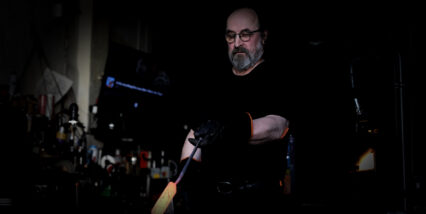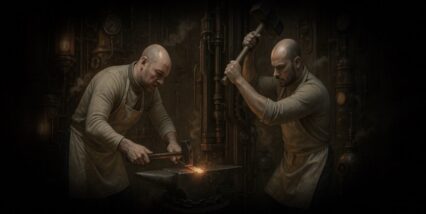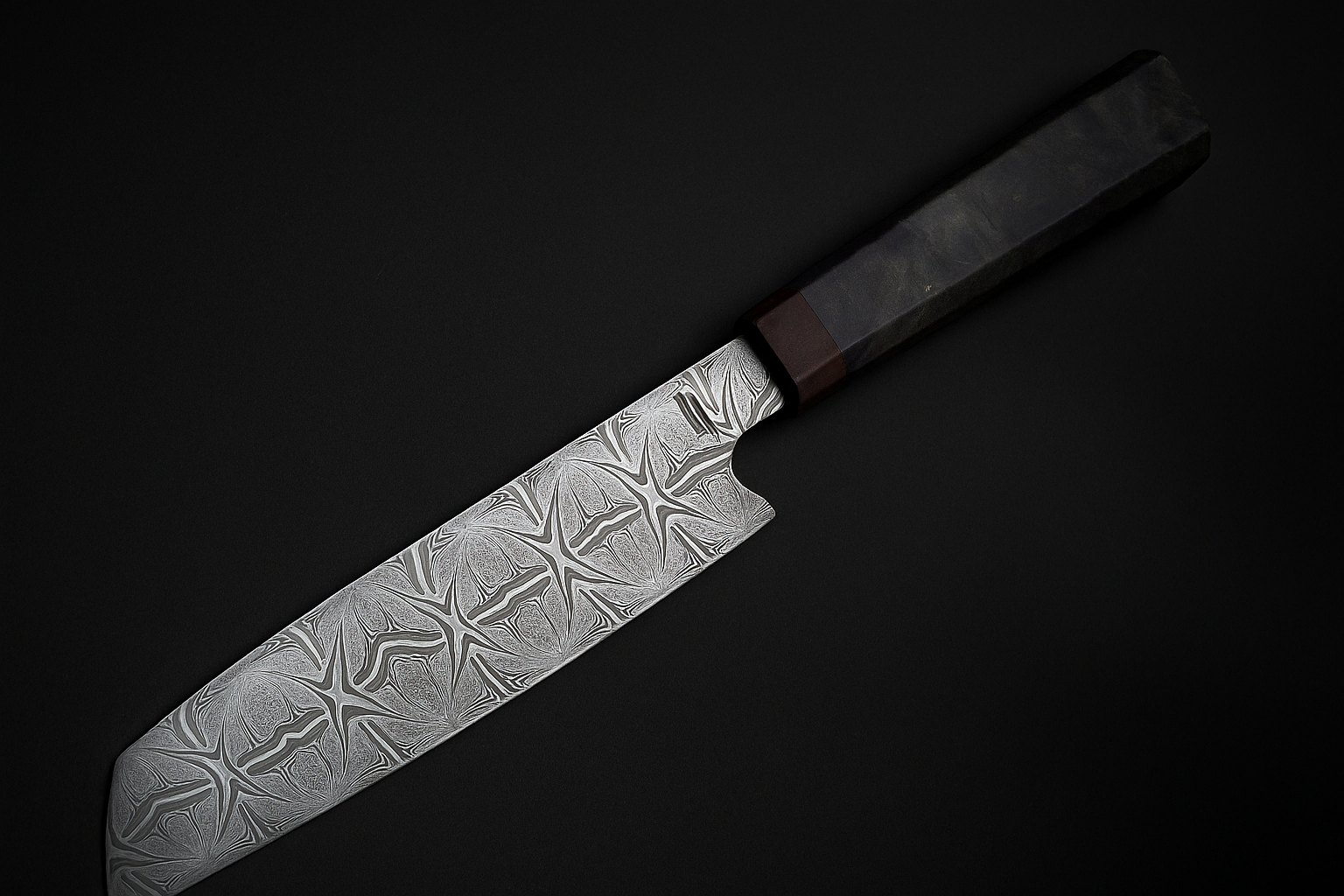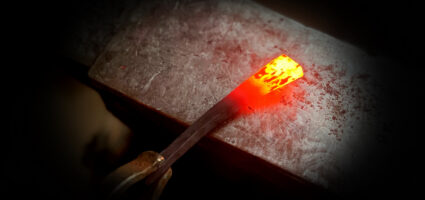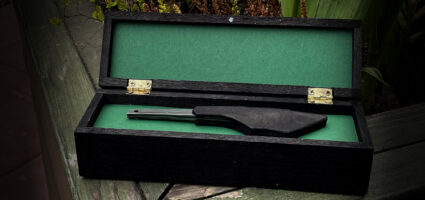Hand-forged Damascus steel – Hephaistos Lab in Tallinn
Everything begins in the forge – from flame, hammer strike, and metal that takes on form and soul under the master’s hand.
Hephaistos Laboratory is a place where ancient blacksmithing lives on through modern knowledge and manual skill.
Here, ancient craftsmanship, materials science and technology intertwine, giving shape to forged objects that are made to last and to carry their own story.
In this forge, hand-forged Damascus steel tools and knife blades are made, where each pattern and layer tells stories of skill and time.
Why Damascus steel
A handmade Damascus kitchen knife is more than just a cutting tool — it is a work instrument that lifts the user’s experience to a new level. Here are the main reasons why this knife can be an exceptional choice for both home cooks and professionals:
Sharpness and cutting ability
A Damascus kitchen knife holds its edge very well:
• Thanks to multi-layer steel (e.g. 200 layers), which combines hardness and flexibility, the cutting edge stays sharp much longer than with a regular knife.
• The sharpness of the edge means you don’t have to “push through” the food — the cut glides easily and precisely, reducing hand fatigue and making cutting enjoyable.
Precision and control
• The knife is hand-balanced and has an ergonomic wooden handle that fits comfortably in the hand.
• This gives the user more precise control over the cut — whether it’s a thin slice of tomato or filleting fish, every cut comes out precise and clean.
Durability and reliability
• Damascus steel is not only beautiful — it is a seriously durable material that withstands decades of use.
• With proper care (drying, light oiling), this knife can last a lifetime and beyond — it can be passed down from generation to generation.
Personal connection and value
• Since it is a hand-forged item, each knife is unique. It is not mass-produced, but a masterful piece of work backed by the blacksmith’s skills and experience.
• Such a knife evokes a sense of pride and deeper connection in the user — it is not just a tool, but part of a daily ritual.
Aesthetic enjoyment
• The wavy pattern of Damascus steel is different on every knife — making each one a small work of art.
• The knife offers not only functionality but also visual pleasure, making it a worthy addition to any kitchen.
Summary
A handmade Damascus chef’s knife makes the user’s work easier, more precise and more enjoyable. It is a tool that helps not only to cut better but also to appreciate the process of cooking more deeply — it brings quality, beauty and joy into the kitchen.
Our blacksmithing and services
• Damascus steel knife blades and tools – Hand-forged, created in a traditional spirit and enhanced with modern experience.
• Workshops and blacksmithing courses – An opportunity to experience the blacksmithing process, learn to understand the material, and create something with your own hands.
• Team events and teamwork days – We offer companies and groups of friends the chance to spend a day in the forge, learning cooperation, patience and creativity through hands-on experience.
Fire, steel and time are our daily companions. The forge is a place where speed and haste fall away, giving space to focus and to a real experience.
Orders and collaboration
We are open to custom orders and collaboration projects.
If you’re looking for a unique forged tool or a handmade Damascus steel kitchen knife, we are ready to find the best solution together with you.
Each item is born from thought, material awareness and careful work.
Step into the world of the forge
You are welcome to discover the beauty of craftsmanship and the power of blacksmithing.
See our work in our online store or contact us if you want to place an order, book a workshop or organize a memorable team event.
👉 Discover our products
👉 Traditional blacksmithing
👉 Contact us

